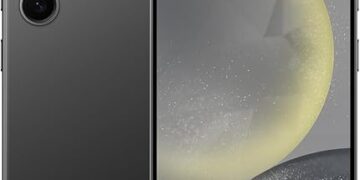In the world of iPhone photography, it seems that Apple has reached a point of perfection. With each new model, they gild the Lily even more, adding layers of varnish and presenting it in an attractive case. But, as exciting as these upgrades may be, they hardly compare to the early days of the iPhone when each new model was a game-changer. Now, we find ourselves seeking out the most improbable lighting conditions and committing the most egregious compositional gaffes just to spot a noticeable improvement. It seems that smartphone cameras have become so good that further upgrades are simply not interesting or worthwhile. Perhaps Apple should focus on improving other aspects of their devices, like Siri.
The Evolution of iPhone Photography
Introduction
Welcome to the world of iPhone photography! Over the years, the cameras on iPhones have evolved and improved, offering users incredible features and capabilities. From the early days of the iPhone to the current models, there have been significant advancements that have changed the way we capture and share photos. In this article, we will explore the evolution of iPhone photography, from the early days to the present, and look ahead to what the future may hold.
Early Days of the iPhone
In the early days of the iPhone, the cameras were basic and did not have many advanced features. However, even with their limitations, people were thrilled with the idea of having a camera built into their phone. It was a revolutionary concept and opened up new possibilities for capturing moments on the go.
Advancements in Portrait Mode
One of the major advancements in iPhone photography came with the introduction of Portrait Mode. This feature, initially introduced in the iPhone 7 Plus, allowed users to take stunning portraits with a blurred background, also known as bokeh effect. It created a depth-of-field effect that was previously only possible with professional cameras and lenses.
Improved Zoom Capability
Another significant improvement in iPhone photography was the enhancement of zoom capability. With each new model, Apple has been able to improve the zoom capabilities of the iPhone cameras. The introduction of dual-camera systems and the increase in megapixels allowed for better and more detailed zoomed-in shots. This improvement made it easier for users to capture distant subjects without sacrificing image quality.
The Stagnation of Advancements
However, as time went on, the advancements in iPhone photography seemed to plateau. Each new model did bring some improvements, but they were not as groundbreaking as the early days of the iPhone. Apple seemed to have reached a point where the cameras were “good enough” for most users. The incremental upgrades no longer generated the same level of excitement as before.
The Impact of Smart HDR
One feature that did make an impact on iPhone photography was Smart HDR. This feature, introduced in the iPhone XS and XR, used computational photography to combine multiple exposures and create a well-balanced image with accurate lighting. It helped overcome challenging lighting situations and delivered stunning results. However, despite its usefulness, Smart HDR was still only beneficial in specific scenarios and did not have the same wow factor as previous advancements.
The Saturated Market of Smartphone Cameras
With the advancement of technology, smartphone cameras, in general, have become more sophisticated and capable. The market is now flooded with smartphones that offer excellent cameras, making it harder for one brand, like Apple, to stand out. It has become a challenge for Apple to differentiate its iPhone cameras from the competition when most cameras on smartphones are already good enough for everyday users.
Looking Ahead to the iPhone 16
As we look ahead to future iPhone models, it’s hard to predict what new features and advancements Apple will introduce. However, it’s clear that iPhone cameras have already become so advanced that further upgrades may not be as interesting or exciting. Apple may need to shift its focus to other areas and features to continue to captivate consumers.
Shifting Focus to Other Features
While the cameras on iPhones may not see significant advancements in the future, there are other areas where Apple can focus its attention. Improving and enhancing features like Siri, battery life, processing power, and user interface can provide a more well-rounded and compelling user experience. Apple will need to explore new avenues for innovation to continue to stay ahead in the highly competitive smartphone market.
Conclusion
The evolution of iPhone photography has been a remarkable journey. From the early days of basic cameras to the current advanced models, iPhones have transformed the way we capture and share moments. While the cameras may have reached a point of sufficiency, Apple can still find new ways to improve and enhance other aspects of the iPhone user experience. As we eagerly await the iPhone 16 and future models, it will be interesting to see how Apple continues to innovate and surprise us.










![Apple Watch SE (2nd Gen) [GPS 40mm] Smartwatch with Starlight Aluminum Case with Starlight Sport Band S/M. Fitness & Sleep Tracker, Crash Detection, Heart Rate Monitor](https://www.tech-bit.com/wp-content/uploads/2024/06/applewatchse2ndgengps40mmsmartwatchwithstarlightaluminumcase-360x180.jpg)
















![Apple Watch Series 9 [GPS 45mm] Smartwatch with Midnight Aluminum Case with Midnight Sport Band S/M. Fitness Tracker, ECG Apps, Always-On Retina Display, Water Resistant](https://www.tech-bit.com/wp-content/uploads/2024/06/applewatchseries9gps45mmsmartwatchwithmidnightaluminumcasewith-360x180.jpg)



![Apple Watch Ultra 2 [GPS + Cellular 49mm] Smartwatch, Sport Watch with Rugged Black Titanium Case with Black Ocean Band. Fitness Tracker, Precision GPS, Action Button, Extra-Long Battery Life](https://www.tech-bit.com/wp-content/uploads/2024/10/applewatchultra2gpscellular49mmsmartwatchsportwatchwithrugged-360x180.jpg)



































